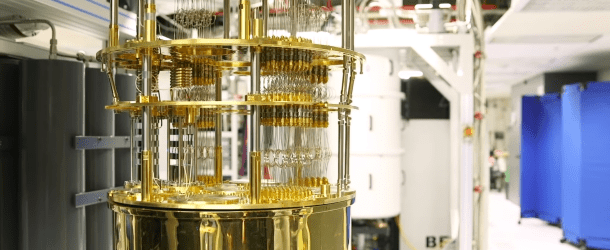Quantum Computing in the Cloud: What Needs to Happen So It Can Live Up to the Hype?

(Electronic Design) Quantum computing has earned its place on the Gartner hype cycle. This article sorts through the hype and discusses quantum computing’s accessibility and what needs to happen to make it happen.
Pundits have claimed that it will take over and change everything forever. The reality will likely be somewhat less dramatic, although it’s fair to say that quantum computers could spell the end for conventional cryptography. Clearly, this has implications for technologies like blockchain, which are slated to support financial systems of the future.
All of this presupposes that quantum computing will become usable and affordable on a widespread scale. As things stand, this certainly seems achievable. Serious computing players, including IBM, Honeywell, Google, and Microsoft, as well as newer specialist startups, all have active programs that are putting quantum computing in the cloud right now and inviting engagement from the wider computing community. Introduction packs and development kits are available to help new users get started.
Although it’s here, quantum computing remains at a very experimental stage. In the future, commercial cloud services could provide affordable access in the same way that scientific or banking organizations can today rent cloud AI applications to do complex workloads that are billed according to the number of computer cycles used.
For all its power, quantum computing isn’t here to kill off classical computing or turn the entire world upside down. Guilding and running a quantum computer is incredibly difficult and complex. On top of that, the challenges intensify as we try to increase the number of qubits in the system. As with any computer, more bits corresponds to more processing power, so increasing the number of bits is a key objective for quantum-computer architects.
Keeping the system stable, with a low error rate, for longer periods is another objective. One way to achieve this is by cryogenically cooling the equipment to near absolute zero to eliminate thermal noise.
In addition, scientists are constantly looking for new material to be applied in quantum-computing chips and need equipment to help them accurately determine the exact properties. Then, once the new quantum chip is manufactured, its resonance frequencies must be measured to ensure that no undesired resonances exist.
While cloud access will enable more companies and research institutes to take part in the quantum revolution, bringing this technology into the everyday requires a lot more work on “user friendliness.” That involves moving away from the temperature restrictions, stabilizing quantum computers with a high number of qubits, and all for a competitive price.
NOTE: There are a number of specific Rohde & Schwarz products introduced in this discussion that alleviate the problems introduced. IQT NEws will return with a focused article on those products.





















